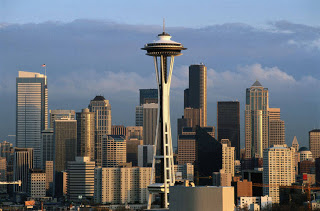 Income inequality is a growing problem in Seattle. Many of us don’t need statistics to tell us that, because we can feel it and see it happening. However, it helps to quantify a problem in order to address it.
Income inequality is a growing problem in Seattle. Many of us don’t need statistics to tell us that, because we can feel it and see it happening. However, it helps to quantify a problem in order to address it.
Just over a week ago, I attended the annual Regional Leadership Conference sponsored by the Seattle Metro Chamber of Commerce, courtesy of the Bullitt Foundation. The conference featured a report by the Boston Consulting Group (BCG) on Seattle’s global competitiveness. Their report highlighted growing income inequality as a key issue affecting the region.
BCG compared Seattle to eight global competitors, including San Francisco, Boston, Singapore, Amsterdam, and Hamburg, using almost 50 different economic and social indicators. Overall, Seattle was right in the middle of the rankings.
They also pointed out Seattle’s growing economic inequality as measured by the Gini Index (a measure of income distribution). BCG predicted that in the next 20 years Seattle will pass New York City in inequality. Why? Middle class jobs have been disappearing in our region, leaving a big gap between top income earners and low-wage jobs.
But something important was missing from the discussion: BCG did not suggest raising the standards for low-wage industries to create more middle income jobs, but focused instead on bringing employers that offer middle class jobs to the Seattle area.
Workforce standards play a vital role in creating living wage jobs. This is an especially prescient issue given the near strike of grocery workers in Seattle this week, the uprising of food service workers throughout the city and the presence on the ballot of Proposition 1 – the Good Jobs Initiative – in SeaTac.
It is short-sighted to neglect workforce standards. Washington’s Employment Security Department projects that the fastest growing industry in the Seattle area from 2011 to 2021 will be the Employment Services sector, which is principally temporary and contract jobs. Half of all projected jobs by 2021 will be in low-wage occupations like retail sales, food preparation, and janitorial services.
According to BCG, transportation infrastructure and the education system are Seattle’s biggest competitive disadvantages, with the worst scores for traffic congestion, transit utilization, and some education measures. BCG’s John Wenstrup noted that South Lake Union already is suffering from heavy traffic congestion, with three million square feet of additional office space still to come, (not to mention the Hedreen mega-hotel development right down the street at 9th and Stewart). Several conference speakers also noted that Washington’s education system is struggling to train workers for the good jobs of the future and reduce high school drop-out rates.
Let’s juxtapose those facts against this: BCG concludes the costs of doing business in Seattle are among the lowest of the global cities—Seattle’s average wages are third lowest out of the nine cities, at a average of $21.00 an hour, and office and industrial rents are lower than average.
Of interest to the debate over living wages at SeaTac: Delta Airlines Vice President Mike Medeiros told the conference that Delta is expanding in Seattle, in part because international routes from Sea-Tac Airport to Asia are shorter than flying from San Francisco or Los Angeles, meaning Sea-Tac will continue to grow as an international airline hub.
What we need to remember is this: Living wage jobs and higher workforce standards need to be at the center of our attempts to address economic inequality in the region if we are to make a significant impact on our regional competitiveness.
